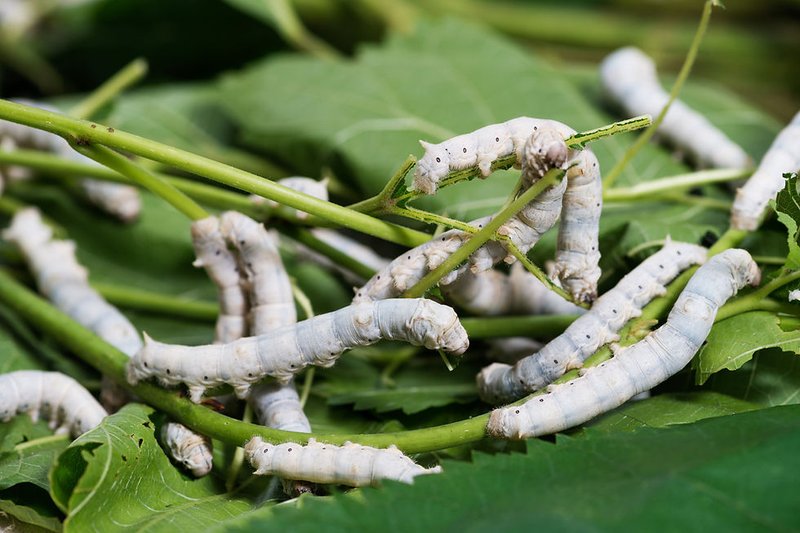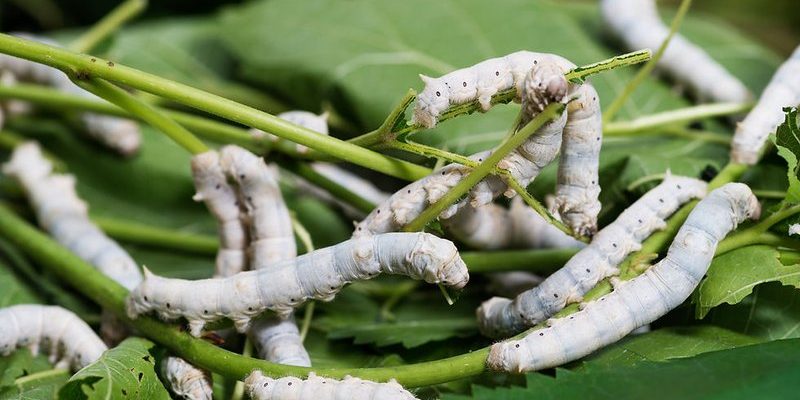
Silk is made from the cocoons of silkworms, specifically the *Bombyx mori* species. These tiny creatures are the backbone of the silk industry, and it’s fascinating to think about how their small contributions add up to create something so beautiful. So, how many silkworms does it take to produce just one gram of silk? Spoiler alert: the number is quite surprising!
The Life Cycle of a Silkworm
Before diving into numbers, it’s helpful to understand the life cycle of a silkworm. These critters begin their journey as tiny eggs, which hatch into larvae. Think of them like little caterpillars on a mission. They spend most of their life munching on mulberry leaves, growing rapidly.
Once they reach maturity, which usually takes about 25–30 days, they enter the next phase: spinning cocoons. This is where the magic happens. The larvae produce a protein called fibroin and spin it into long threads to form a protective cocoon around themselves. This is the silk we’re after!
During this stage, silkworms can produce several hundred meters of silk thread. Isn’t it amazing to think that something so delicate starts off as a little worm? But how much do they actually produce?
Silk Production: The Numbers Behind It
You might be wondering just how many silkworms it takes to make a single gram of silk. On average, it takes about 2,500 to 3,000 silkworms to produce one gram of silk. Yes, you read that right! That’s a small army of silkworms working hard to give us that luxurious feel.
To put this into perspective, if you’re wearing a silk scarf, it likely required the collective effort of thousands of these little beings. It feels almost magical when you think about the nature behind it, doesn’t it?
Silk Extraction Process
Once the silkworms have spun their cocoons, it’s time for silk extraction, a process that’s a bit like peeling back the layers of an onion. The cocoons are harvested and then boiled to kill the pupae inside. This might sound harsh, but it’s necessary to unwind the silk fibers.
The boiling process also helps soften the cocoon, making it easier to unravel. The result is a long, continuous strand of silk, which can be many hundreds of meters long. These threads are then twisted together to create the beautiful silk fabric we all know and love.
You might be thinking, “Isn’t there a more humane way?” Well, there are alternatives like peace silk, which allows the silkworms to emerge and live out their lives. However, this method often results in shorter and less consistent threads since the cocoons are damaged upon opening.
Factors Affecting Silk Production
Several factors affect how much silk a silkworm can produce. Some of these factors include:
- Diet: Silkworms primarily eat mulberry leaves, and a healthy diet leads to better silk production.
- Environment: Temperature and humidity levels can significantly influence growth and cocoon quality.
- Breed: Different breeds of silkworm yield varying amounts of silk; some are more prolific than others.
The synergy of these factors helps determine not just the quantity but also the quality of the silk produced. If any of these elements are off, it can lead to lower production rates.
Why Does This Matter?
Now you might be wondering, why does understanding how many silkworms are needed for one gram of silk even matter? Well, for starters, it helps you appreciate the art and effort that goes into producing silk.
Knowing the hard work of these tiny creatures can make you think twice before tossing that silk tie into the washing machine. It’s a reminder of the interconnectedness of nature and the importance of sustainable practices in the silk industry.
As demand for silk grows, so does the need for ethical silk production methods that protect the silkworms and the environment.
So, there you have it! Producing one gram of silk requires the dedicated effort of about 2,500 to 3,000 silkworms. This fact not only showcases the incredible work these small creatures do but also highlights the importance of sustainability in textile production.
Next time you wrap yourself in silk, remember the journey it took—from mulberry leaves to your wardrobe. Wouldn’t it be wonderful to think that a little teamwork in nature gave rise to something so luxurious? Silk isn’t just a fabric; it’s a testament to the wonders of the natural world.

